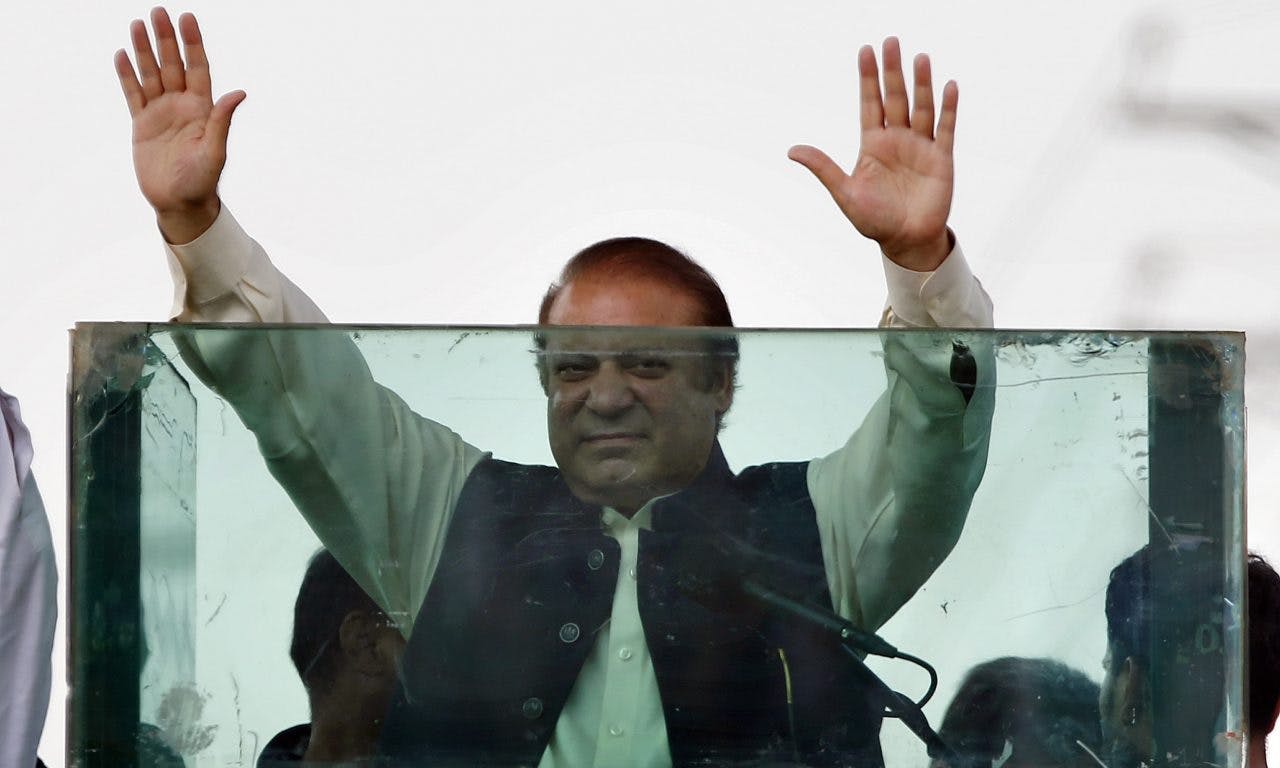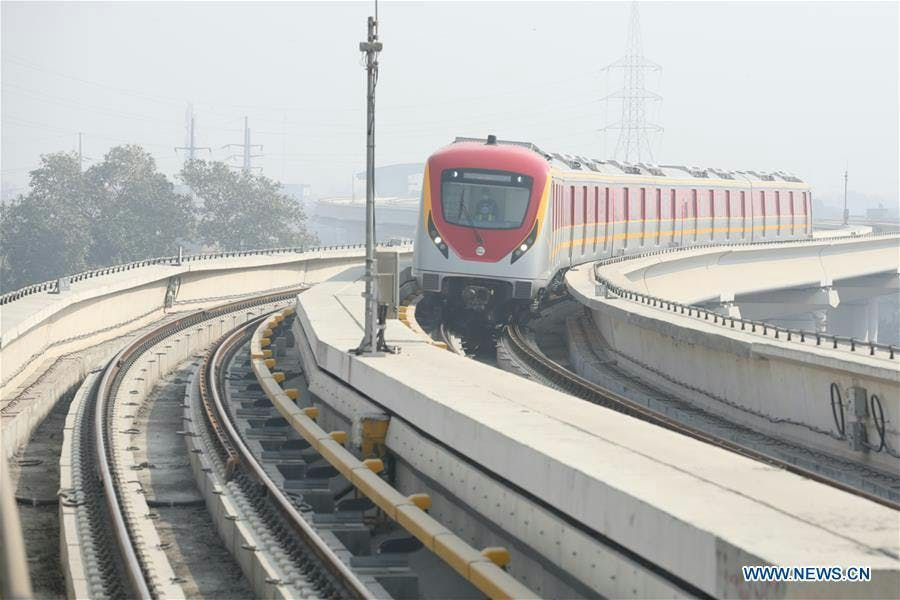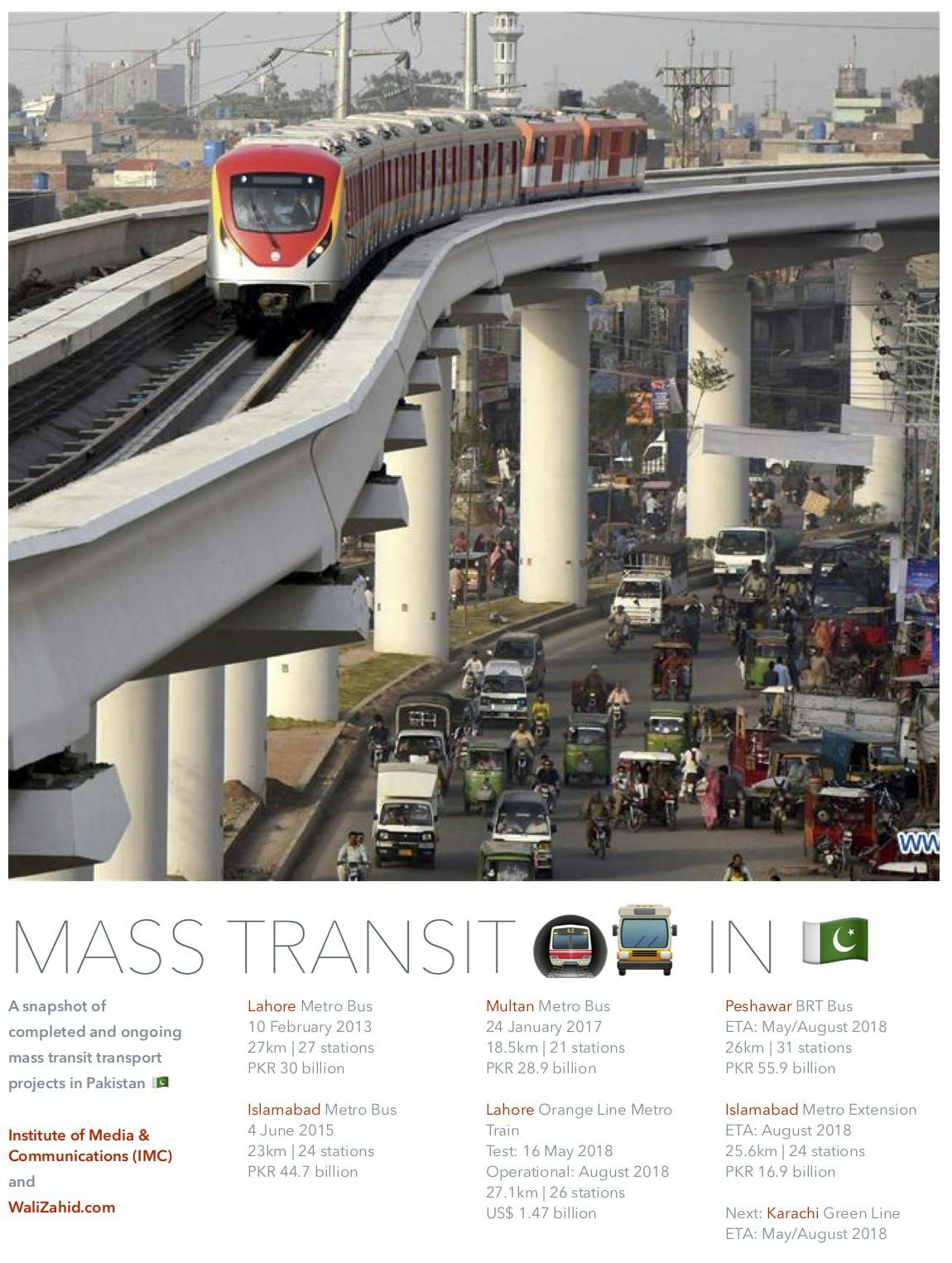CPEC fact sheet: 2013-2023 by IMC & China Center
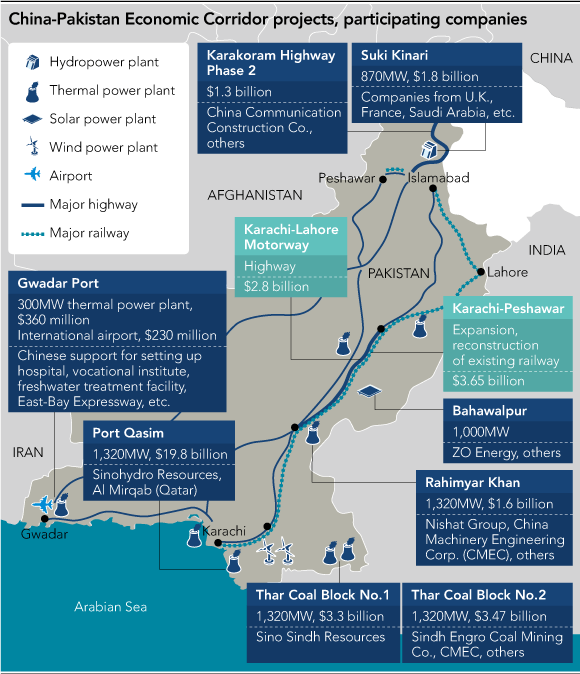
Major CPEC events in 2023
29 July 2023: He Lifeng, special representative of President Xi, will travel to Pakistan from 30 July to 1 August to attend the Decade of China-Pakistan Economic Corridor (CPEC) celebration event in Islamabad - Xinhua.
27 April: Ten years after $46B CPEC was announced, Pakistan may receive a new $58B rail link as China's BRI project. The 3,000km rail link will connect Gwadar port in Pakistan to the Chinese city of Kashgar in the Xinjiang Uygur autonomous region. Source: Fox News and SCMP.
3 April: After three years of closure, border trade and travel resume today from China-Pakistan border at Khunjerab Pass under the China-Pakistan Economic Corridor (CPEC).
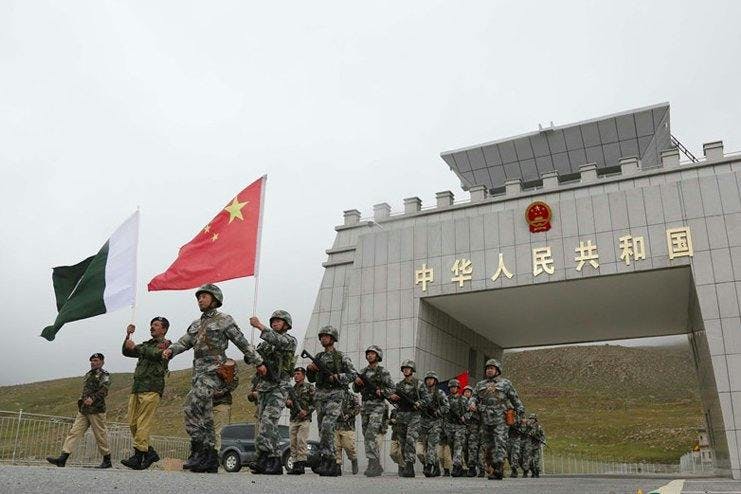
Major CPEC events in 2022
3 November 2022: 46 Chinese-made wide gauge railway coaches have been loaded in China's Tianjin Port and will be shipped to Pakistan on Thursday, marking the first time China will have exported its technology for constructing railway coaches capable of speeds of 160km per hour, China's Consul General in Karachi tweeted.
1 November: PM Shehbaz Sharif leaves for China on a two-day official visit. Ministers Bilawal Bhutto-Zardari, Ishaq Dar, Ahsan Iqbal, Marriyum Aurangzeb, Saad Rafique and Sindh CM Murad Ali Shah are accompanying him. PM says the discussions with the Chinese leadership will focus on the “revitalisation of the CPEC. CPEC projects were delayed during the previous government’s tenure.
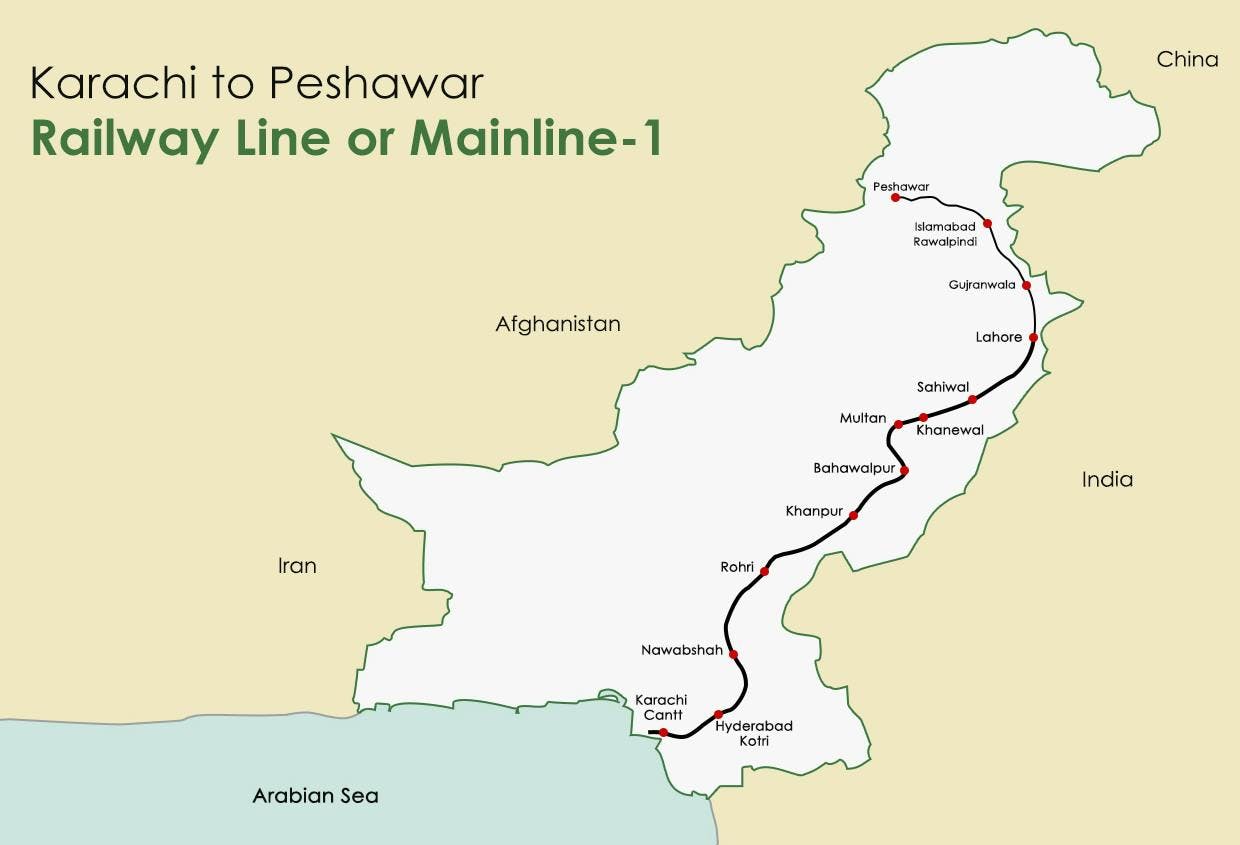
31 October: The Executive Committee of National Economic Council (Ecnec) approves two infrastructure projects under the China-Pakistan Economic Corridor (CPEC) - the $10 billion Main Line-I (ML-I) project of Pakistan Railways and the $1.3 billion Karachi Circular Railway (KCR) project.
Major CPEC events in 2020
25 October 2020: After a delay of nearly three years, the Lahore Orange Line Metro Train (OLMT) starts its commercial service. As an early harvest project under CPEC, the Orange Line was constructed by China State Railway Group Co Ltd and China North Industries Corporation and was operated by Guangzhou Metro Group, Norinco International and Daewoo Pakistan Express Bus Service. 27 energy-saving electric trains, each comprising five air-conditioned wagons, with the operating speed of 80km per hour, provides a comfortable, secure and economical traveling facility to 250,000 passengers daily, according to Xinhua. Our separate story here.
5 August: The ECNEC approves the $6.8 billion ML-I railway project under CPEC. Pakistan’s existing 2,655 km railway tracks will be upgraded to allow trains to move up to 165km per hour - twice as fast as they currently do - while the line capacity will increase from 34 to over 150 trains each way per day. Groundbreaking will happen in February 2021, and the project will complete by 2030.
Major CPEC events in 2019
5 Nov 2019: Pakistan and China set a new ↓ direction of CPEC by largely shifting away from infrastructure projects, except the $9 billion Main Line-I (ML-I) project. Other decisions to expand the CPEC scope to copper, gold, and oil and gas sectors were taken during the 9th Joint Cooperation Committee (JCC) meeting in Islamabad.
28 April: List of Agreements signed during PM IK's visit to Beijing for BRF 2019, according to Chinese Embassy in Islamabad
1. CPFTA-II (China Pakistan Free Trade Agreement Phase II)
2. Rashakai SEZ Concession Agreement
3. Declaration of Completion of Preliminary Design Phase-I on Upgradation of ML-I
4. China-Pakistan Economic & Technological Cooperation Agreement
5. MOU on CPEC Social Economic Cooperation
Major CPEC events in 2018
10 September 2018: PM Imran Khan establishes a nine-member committee to evaluate CPEC projects. It is scheduled to meet for the first time this week and will “think through CPEC – all of the benefits and the liabilities”, says Abdul Razak Dawood, who sits on the new committee, and is advisor to PM on commerce, textiles, industry and investment.
“I think we should put everything on hold for a year so we can get our act together,” he added. “Perhaps we can stretch CPEC out over another five years or so.”
Several other officials and advisers concur that extending the terms of CPEC loans and spreading projects out over a longer timeframe is the preferred option, rather than outright cancellation. – says a news report in Financial Times, London.
13 July: Pakistan and China inaugurate the optic fibre cable that has been laid to provide direct link between Pakistan, the Middle Asia and East Asia. Caretaker PM Nasirul Mulk, Chinese Ambassador Yao Jing were present at the inauguration ceremony in Islamabad.
The cable connects Rawalpindi with Khunjerab on the Pakistan-China border at an altitude of 4,700 meters, the highest fibre cable project in the world. Later, the cable will be extended to Gwadar, which will fully connect Pakistan and China.
Total cost was estimated at $44 million and Exim Bank of China provided 85% of loan at a concessionary rate. Construction work on the project started in March 2016 and ended in June 2018. The cable covers an area of 820km. There are 26 microwave transmission nodes from Rawalpindi to Karimabad and 171 km of aerial fibre cable from Karimabad to Khunjerab as a back-up. – Express Tribune.
7 March 2018: A first commercial shipment carrying containers of seafood from Gwadar leaves for Dubai’s Jebel Ali port. With this, China’s state-owned shipping and logistics services supplier, China Ocean Shipping Company (COSCO), starts a weekly container shipping service from Gwadar Port every Wednesday.
Major CPEC events in 2017
18 Dec: The CPEC Long Term Plan (LTP) approved by both Chinese and Pakistani governments has been unveiled in Islamabad. According to Chinese Embassy tweets:
By 2020, the CPEC will take the initial shape, major bottlenecks to Pakistan’s economic and social development will be addressed, and the CPEC will start to boost the economic growth along it for both countries.
By 2025, the CPEC building phase done, the industrial system nearly complete, major economic functions brought into play in a holistic way, the people’s livelihood along the CPEC significantly improved and regional economic development more balanced.
By 2030, the CPEC building phase to be entirely accomplished, endogenous mechanism for sustainable economic growth in place, CPEC’s role in stimulating economic growth in Central and South Asia brought into holistic play, and South Asia to grow into international economic zone with global influence.
The LTP has an ambitious goal and an arduous task. As long as governments and people of two countries treat each other with all sincerity and cooperate sincerely, they will build CPEC into an open, inclusive one with economic prosperity, social stability and security, and wellbeing of people.
The LTP will provide macro guidance for implementation of CPEC in next phase. The plan will be adjusted based on real situation as well as the consensus between two parties during its implementation in future. New routes/ nodes/ aspects may be considered in future by mutual agreement.
21 Nov: The 7th Joint Coordination Committee (JCC) meeting on CPEC is being held today in Islamabad.
8 Nov: The 7th Joint Coordination Committee (JCC) meeting on CPEC will be held on 21 Nov in Islamabad. It will approve nine Special Economic Zones (SEZs) to be constructed along CPEC. The planned nine SEZs with special incentive packages for foreign investors will be operational by 2025.
Financing agreements on three road projects – remaining portion of Karakoram Highway (KKH), D.I. Khan to Zhob and Khuzdar to Basima will be signed at the meeting. It is likely that CPEC long term plan will also be approved at JCC. In addition, Karachi Circular Railway (KCR) project may also be placed for final approval.
7 Nov: President Mamnoon Hussain inaugurates Bank of China’s operations in Pakistan, says China has emerged as a major investor and partner for Islamabad. Bank of China Chairman Chen Siqing says the Karachi branch is its first in South Asia.
18 Oct: A delegation of Chinese experts and investors was in Pakistan during 11-18 October to explore new trade avenues and investment opportunities in 9 SEZs. They held workshops and meeting in Karachi, Lahore, Faisalabad and Islamabad organised by the Board of Investment (BoI). They also visited SEZs in Punjab, Sindh, Rawalpindi, Gilgit-Baltistan and Gwadar Port Industrial Zone in Balochistan.
8 Sept: PM Shahid Khaqan Abbasi forms an 11-member Cabinet Committee on CPEC, overhauling the existing institutional arrangement and bypassing the planning ministry. The CPEC committee members are finance minister, interior minister, foreign minister, railways minister, ports and shipping minister, Special Assistant to the Prime Minister on Economic Affairs Dr Miftah Ismail, Secretary to the Prime Minister Fawad Hassan Fawad, the Federal Board of Revenue chairman, and the Secretaries of Planning and Cabinet divisions.
13 July: 46 Special Economic Zones (SEZs) will be established along side the CPEC route in the long run, Board of Investment (BoI) chairman Dr Miftah Ismail tells Pakistan-China Industrial Cooperation Dialogue. Nine zones (see below) have already been declared prioritised during the 6th JCC meeting held in December 2016.
12 July: Speaking at a two-day CPEC Logistics International Forum (CLIF) in Islamabad organised by army’s NLC (National Logistics Cell), Pakistan’s army chief General Qamar Bajwa says CPEC will be a game changer. Assuring the project’s continuity and security, he says the army will fully guard the CPEC plan.
11 July: Li Xuedoung, DG, National Development and Reform Commission (NDRC), China, says the plan to upgrade ML-I, the main railway track joining Peshawar with Karachi, is a key priority of the working agenda under CPEC. Li meets Khawja Saad Rafique, Minister for Railways at his office.
The ML-I upgradation project will be completed in five years at the cost of $8 billion. China will provide $5.5 billion while $2.5 billion will come from Asian Development Bank (ADB).
3 July: The 1320MW Sahiwal Coal-Fired Power Plant (Units 1 & 2) – CPEC’s one of early-harvest projects – is completed ahead of time in 22 months and goes into operation. Punjab CM Shehbaz Sharif and a Chinese minister inaugurate it, with Chinese ambassador in attendance.
28 May: First round of China-Afghanistan-Pakistan practical cooperation dialogue is held in Beijing. The dialogue is co-chaired by Mansoor Ahmed Khan, Xiao Qian and Khalid Payenda. Three sides appreciate CPEC and its benefits for promoting regional connectivity.
28 May: MoU is signed with China for upgradation of Peshawar to Karachi Railway line called ML-I as the federal government allocates over Rs 42 billion in new budget to reinvigorate railways network.
25 May: The 660MW Sahiwal Coal-Fired Power Plant (Unit 1) – one of CPEC’s early harvest projects – becomes operational today. PM Sharif inaugurates it. Punjab CM Shehbaz Sharif is a force behind its earlier-than-scheduled completion.
12 May: PM Sharif and the four chief ministers arrive in Beijing to attend Belt and Road Forum on 14-15 May where they are likely to sign various MoUs.
11 May: Pakistan’s Executive Committee of National Economic Council (ECNEC) approves Gwadar East Bay Expressway.
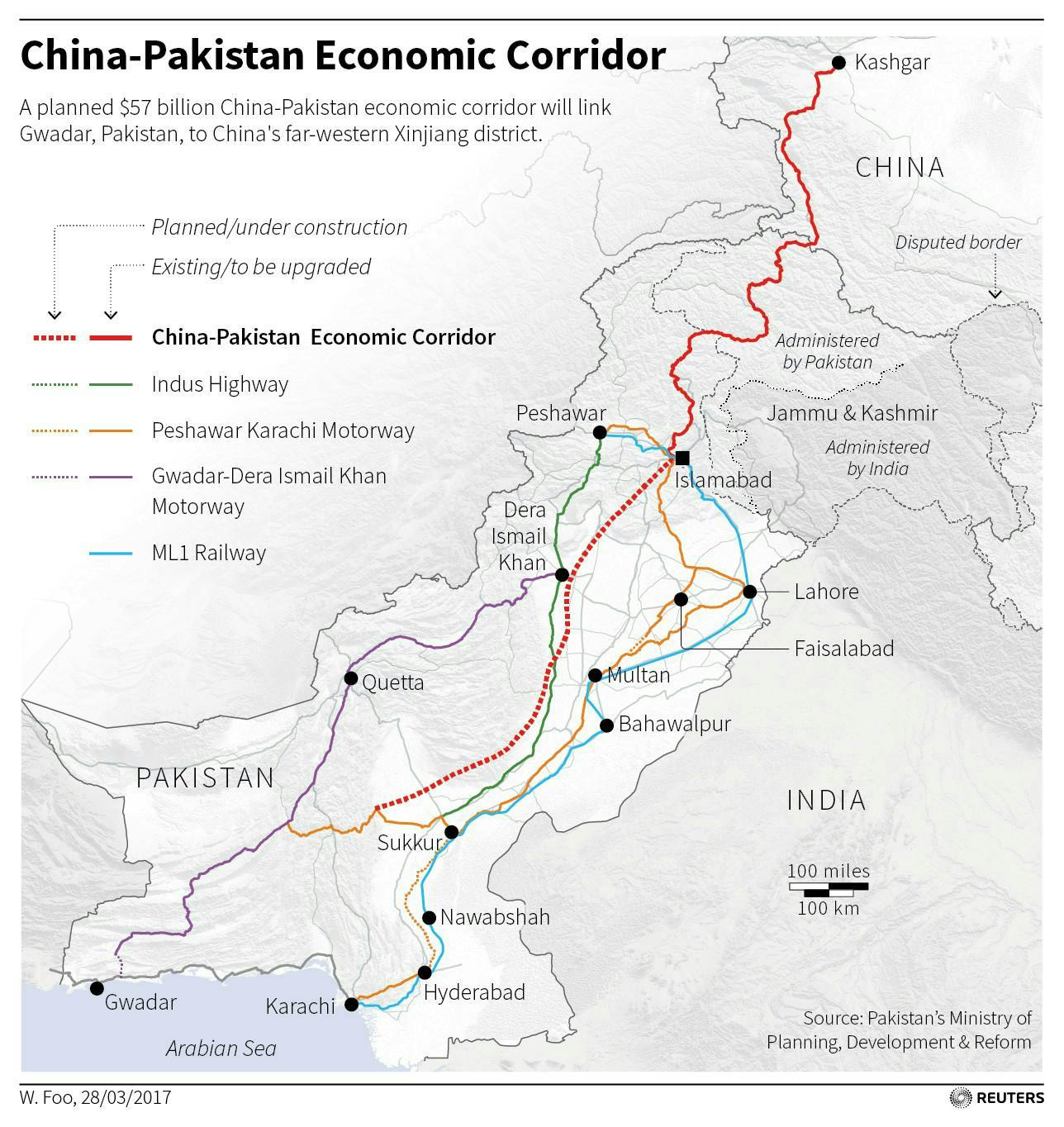
16 March | Gwadar
- Addressing a public gathering in Gwadar, PM Sharif says 1,100km roads are being constructed in Balochistan
- Federal Minister SAFRON Gen Abdul Qadir Baloch says more than 60 countries are willing to invest in Gwadar
- PM announces to build a university and a 300-beds hospital in Gwadar
14 March: Construction work on Karachi Circular Railway (KCR) project will start soon: PM Sharif speaking in Karachi
7 March: A team of Chinese engineers is in Quetta to start work on the Quetta Mass Transit Train (QMTT) Project. After a feasibility report, the Chinese firm has sought an NOC from the government to start work on 48km QMTT from Spezant to Kuchlak. In the current budget, the Balochistan government has allocated Rs 1 billion for QMTT feasibility. In December, the project was included in CPEC at 6th JCC in Beijing. The QMTT funds will come from CPEC kitty.
6 March: The federal government plans to build a CPEC Tower in Islamabad. As a sign of Pak-China friendship, the tallest building in the capital will serve as a symbol of socioeconomic progress Pakistan is making across all fronts and will attract investors.
5 Feb: CPEC is now worth $57 billion, according to Reuters news agency. Other agencies term the current projects valued at $51 billion.
3 Feb: PM Sharif inaugurates the completed first 75km-section of the 136km six-lane Karachi-Hyderabad (M-9) Motorway. The sections 2 and 3 will be completed by March and July respectively by FWO.
As part of Peshawar-Lahore-Karachi motorway route, M-9 will connect Karachi with the rest of the country and also facilitate the CPEC traffic. According to one guesstimate, once completed, CPEC-related toll tax collection may amount to a couple of billion dollars a year.
January: 9 CPEC Special Economic Zones (SEZs)
Under next development phase, nine CPEC Special Economic Zones (SEZs) are being set up in the country, as agreed in the 6th JCC in Beijing on 29 Dec last year.
Of these, two industrial zones are being set up by the federal government in Islamabad and Karachi. The rest of seven are established each in Punjab, Sindh, KP, Balochistan, Gilgit-Baltistan, Fata and Azad Kashmir. Here are details:
- Federal 1: ICT Model Industrial Zone, Islamabad
- Federal 2: Development of Industrial Park on Pakistan Steel Mills Land at Port Qasim near Karachi
- KP: Rashakai Economic Zone on M-1
- Sindh: Dhabeji SEZ
- Balochistan: Bostan Industrial Zone
- Punjab: Punjab-China Economic Zone, M-2 Sheikhupura district
- AJK: Bhimber Industrial Zone
- FATA: Mohmand Marble City
- Gilgit-Baltistan: Moqpondass SEZ
27 Jan: In a major development, which is a milestone in its execution, Sahiwal Power Plant has been connected with the national grid (500KVA Line). It is six months ahead of schedule. First coal-laden 1,500-tonnes freight train arrives at Sahiwal coal power plant from Port Qasim Karachi on 1 Feb. Punjab CM Shehbaz Sharif receives.
3 Jan: Milestone: Another big Chinese ship visits Gwadar Port. After three years of maintenance and renovation, the port is restored to its designed capacity. Gwadar Free Zone is now under construction: Lijian Zhao, DCM, Chinese Embassy
Major CPEC events in 2016
30 Dec: Under CPEC’s next development phase, nine industrial zones will be set up in the country, the 6th JCC in Beijing agreed. Of these, two industrial zones will be set up by the federal government in Islamabad and Karachi, while the rest of seven will be established each in Punjab, Sindh, KP, Balochistan, Gilgit-Baltistan, Fata and Azad Jammu & Kashmir (AJK).
29 Dec: The sixth meeting of the Joint Coordination Committee (JCC) in Beijing approves inclusion of these projects in CPEC framework: Karachi Circular Railways, Keti Bunder sea port development project and Diamer-Basha Dam.
It also agrees on Mass Transit Railways projects in each of the provincial headquarters to facilitate millions of people besides setting up SEZs.
New road projects on the western route were also approved. These include 136km Thakot-Raikot (remaining portion of N-35) in addition to 118km KKH Phase II (Thakot-Havelian section); and upgradation of 210km D.I.Khan-Zhob (N-50 Phase-I).
In Balochistan, 210km dual carriageway from Yarik to Zhob and 110km Khuzdar-Basima N-30 road will be built.
New provincial CPEC projects
- Chitral CPEC link road from Gilgit, Shandor, Chitral to Chakdara
- Mirpur-Muzaffarabad-Mansehra road construction for connectivity with CPEC route
- Naukundi-Mashkhel-Panjgur road project connecting with M-8 & N-85
- Quetta water supply scheme from Pat feeder canal, Balochistan
- Iron ore mining, processing & steel mills complex at Chiniot, Punjab
During 2013-2016, the JCC on CPEC held six meetings:
- JCC 6: 29 December 2016 |Beijing
- JCC 5: 12 November 2015 | Karachi
- JCC 4: 15 March 2015 | Beijing
- JCC 3: 27 August 2014 | Beijing
- JCC 2: 9 February 2014 | Beijing
- JCC 1: 27 August 2013 | Islamabad
19 Dec: A gate-free and signal-free 1,872km railway track from Karachi to Peshawar (ML-I) costing $8.2 billion will be constructed: Railways Minister
14 Dec: In Turbat, PM Sharif inaugurate 448km N-85 Sorab-Hoshab road on the Western route of CPEC. The road, upgraded by FWO at a cost of Rs 22 billion, will link Gwadar Port with N-25 National Highway near Sorab/Quetta.
14 Dec: A Chinese cargo ship is arriving at Gwadar on 15 December. The cargo is for business centre in Gwadar Free Zone (GFZ).
13 Dec: Pakistan Navy assembles a Task Force-88 (TF-88) for the seaward security of Gwadar port, organises a maritime conference on CPEC attended by all service chiefs and CJCSC. Snippets by Andrew Small:
- Chinese ambassador, speaking in Gwadar: CPEC has already created 10,000 jobs in Pakistan, including 400 in Gwadar.
- DG, GDA: The whole of the Gwadar Master Plan Area will be declared as a Special Economic Zone on the Shenzhen model, not just the Free Zone.
- Iranian official: Discussions on a rail-link between Chabahar and Gwadar are ongoing; we have already agreed they will be sister ports
- Chairman, China Overseas Ports Holding Company (COPHC): Gwadar will be the largest shipping centre in South Asia by 2022.
1 Dec: China and Pakistan launch direct rail and sea freight service between Kunming and Karachi cutting transport cost by over 50 percent.
26 Nov | Turkmenistan
PM Sharif meets Turkmenistan President. Says many countries want to be part of CPEC following Iran and Turkmenistan and half of world’s population to benefit from CPEC project. South and Central Asia to be connected through road and rail.
17 Nov | Islamabad
- PM Sharif offers Turkish investors to invest in CPEC
- Turkish President Recep Tayyip Erdogan while on a two-day visit to Pakistan: Turkey believes CPEC will become a source of international peace and stability
- Earlier, Turkish Ambassador to Pakistan attends CPEC ceremony at Gwadar Port where Turkey confirms participation in the CPEC project
- Meanwhile, Chinese Foreign Minister Wang Yi pays an official visit to Turkey and meets his Turkish counterpart Mevlüt Çavuşoğlu
- China declares 2018 as the Turkey Tourism Year in China
- All in a week. This week.
13 Nov | Gwadar
A historic day: A dream turned into reality. In two years, the 2,500km CPEC trade route that links Xinjiang province in China with Gwadar goes live with the opening of Gwadar Port for trade activity.
There are three firsts today, according to Lijian Zhao of China Embassy:
1. Gwadar is exporting containers
2. The Western route of CPEC is open to traffic
3. China and Pakistan undertake joint trade convoy
Earlier in a grand ceremony, PM Sharif inaugurates the first mega pilot trade project at Gwadar Port (photo below).
Federal Ministers Khawaja Asif, Ahsan Iqbal, Army Chief General Raheel Sharif and National Security Advisor Nasser Khan Janjua accompany the PM in addition to politicians Mir Hasil Bizenjo of National Party and Maulana Fazlur Rehman of JUI (F).
Chinese Ambassador Sun Weidong also speaks as Balochistan Chief Minister Sanaullah Zehri welcomes the guests.
Full-length coverage by Dawn.
11 Nov: The first Chinese trade convoy of 60 containers arrives in Gwadar on Friday evening via western route of CPEC. Originating from Kashghar in China, it reaches Gwadar via Khunjrab border, Sust dry port and Quetta. Chinese goods from Gwadar Port will be exported to African and Middle Eastern countries. The convoy took 12 days to reach Gwadar from Khunjrab.
The second trade convoy is reaching Gwadar on Saturday.
At the same time, a pilot activity ship – COSCO Wellington – docks at Gwadar Port to carry Chinese and Pakistani goods to Africa and Middle East. It will leave for Dubai on Sunday.
9 Nov: The first Kashghar-Gwadar trade convoy of 60 Chinese containers arrives in Quetta via western route of CPEC. It will reach Gwadar on 12 Nov. Yuan, chief adviser of Chinese Xinjiang province, meets Balochistan Chief Minister Nawab Zehri who terms it a remarkable progress.
The convoy is part of the 200-container caravan and Chinese products will be exported to African and other countries through Gwadar Port.
9 Nov: President Mamnoon Hussain and PM Sharif say no obstacle in the way of timely completion of CPEC project will be tolerated.
7 Nov: The Executive Committee of the National Economic Council (Ecnec) approves D.I. Khan Motorway project, with acquisition of 7,496 acres of land for construction of 285km 4-lane expressway as part of the western route of CPEC. The project will cost Rs 11.973 billion without foreign exchange component.
7 Nov: The Special Committee of Senate on CPEC in its third interim report raises concern over inadequate width of the Karakoram Highway (KKH) to cater to future traffic volume to be generated by the CPEC. It suggests immediate steps to widen the KKH and proposes additional alternative route for the CPEC by connecting Gahkuch to Shandur and to Chitral via Shandur Pass.
30 Oct: First convoy of 100 Chinese containers arrives at Sust dry port near Khunjrab border, Hunza. 45 containers left for Gwadar. Gilgit-Baltistan Chief Minister Hafeezur Rehman attends the inaugural ceremony.
27 Oct: Chinese bank ICBC shows willingness to provide finances for industrial projects along the CPEC.
20 Oct: National Highway Authority (NHA) approves construction of motorway link for the western route of CPEC. The four-lane 49km Yark-Sago Motorway will cost Rs 13 billion. NHA okays to double the width of 128km Sarai Gambila-Kohat section of Indus Highway at a cost Rs 30 billion.
18 Oct: China’s Ambassador to Pakistan Sun Weidong meets with PTI Chairman Imran Khan where Khan assured the Chinese envoy that his party supports the Sharif government over the CPEC plan.
17 Oct: China welcomes Iran’s inclusion in CPEC, says China’s Ambassador to Pakistan Sun Weidong.
1 Oct: Iran and Saudi Arabia – both on the opposite side of the worldview and everything that comes with it including Middle East conflicts and proxy wars – are eager to join CPEC. Now, this calls for some celebration.
30 Sept: The Chinese government and Asian Development Bank (ADB) agree to to lend Pakistan $8 billion to upgrade the main railway line (ML-I) from Karachi to Peshawar. China’s concessional loan amounts to $5.5 billion, while ADB financing is worth $2.5 billion.
Leveraging social media for CPEC & OBOR: A keynote by Wali at a CPEC conference
27 Sept: China has so far invested $14 billion in 40 early-harvest projects to be completed under CPEC, a flagship project of the One Belt One Road initiative launched by Chinese President Xi Jinping.
Out of the 40 projects, 16 are under construction, a statement quotes Zhao Lijian, DCM Chinese Embassy in Islamabad, as saying.
12 Sept: A CPEC summit of top government leaders and investors in Islamabad projects the overall international investment in CPEC – covering 2015 to 2030 – will shoot up to $150 billion, terming the initial $46 billion only a start, a report in Khaleej Timessays.
1 Sept: PM Sharif inaugurates five developmental projects in Gwadar, Balochistan. He says Pakistan is Gwadar and Gwadar is Pakistan and development projects will go ahead at any cost.
The development projects include a free trade zone, business complex of Gwadar Port Authority, Pak-China Government Primary School Faqir Colony (photo above), Sawar and Shadikor dams and Gwadar University.
The Gwadar airport will cost Rs 29 billion while the Gwadar motorway will cost Rs 150 billion. About 50,000 jobs will be created in Gwadar.
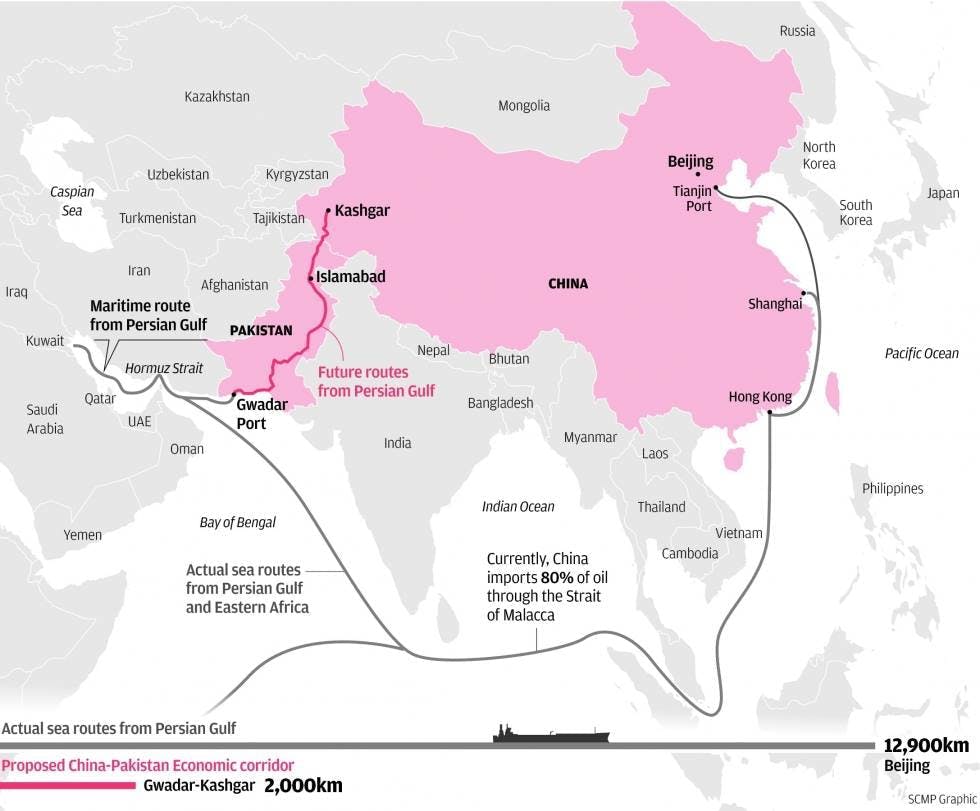
How CPEC will benefit China: This maps above tells us why CPEC – a BRI project – is of central importance to China and why this is likely to go ahead at all costs. A 13,000km sea-based route to be replaced by a safer 2,000+km land-based route for transportation of goods to Hormuz Strait in Persian Gulf. Source: SCMP
When Chinese Leadership style meets Pakistani: Wali’s Talk PPt for China Mobile/ Zong strategy team
Subscribe to our YouTube channel: Wali Zahid
Visit IMC website here
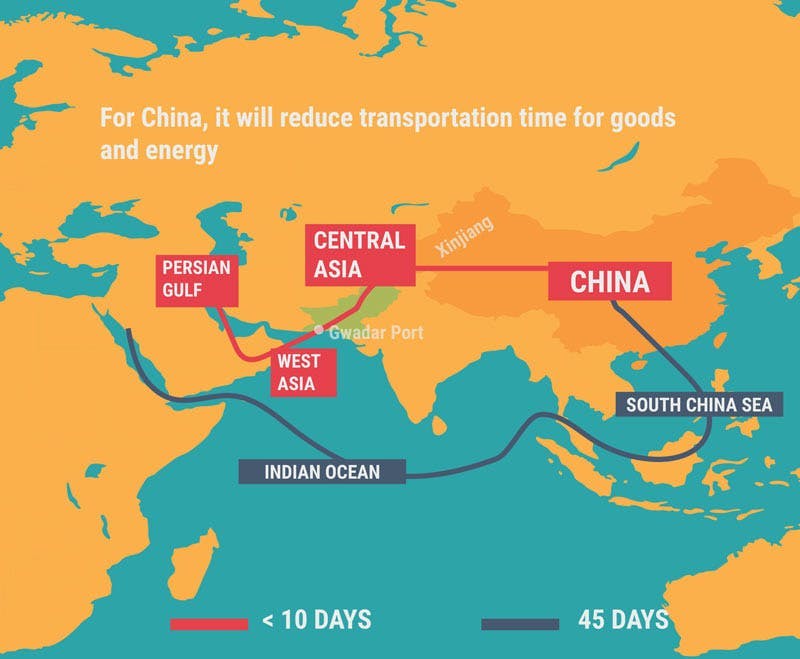
The map above tells us the time reduced for transporting Chinese goods and energy to Persian Gulf: From 45 days to less than 10 days.
1 Sept: PM Sharif inaugurates Rs 4.7 billion 174km Sibi-Kohlu Highway. This will become the shortest route from Quetta to D.G. Khan from the current 600km journey.
29 Aug: PM Sharif inaugurates the CPEC Summit and Expo at Islamabad’s Pakistan-China Friendship Centre. It is attended by Chinese and Pakistani investors.
18 Aug: PM Sharif directs formulation of a mechanism for reviewing the progress and speedy implementation of all CPEC projects. Addressing the federal cabinet he expresses satisfaction over the pace of ongoing energy and infrastructure projects and directs that the timelines of all the projects be met.
26 July: Chinese Ambassador to Pakistan Sun Weidong says work on CPEC is going on in a comprehensive manner and supported by all stakeholders. Addressing an event of China Southern Airlines in Islamabad, he says projects under CPEC will be extended to other sectors including science and technology. He says flights between China and Pakistan are being run daily and their numbers will increase in future.
20 July: Amid rumours of discontent on the part of the Chinese government about CPEC, Chinese Ambassador Sun Weidong quashes all such rumours, saying that China was “satisfied with the smooth implementation on the corridor.”
24 May: Gwadar has been made tax free for 40 years for local and foreign investors.
6 May: PM Sharif inaugurates the construction of Sukkur-Multan Motorway. The six-lane, 393km motorway is part of the eastern route of CPEC and will complete in three years at a cost of Rs 294 billion. The motorway will begin at Multan and end at Sukkur after passing through Jalalpur Pirwala, Ahmedpur East, Ubauro and Panno Aqil.
3 Feb: PASNI/HOSHAB: PM Sharif inaugurates 193km Gwadar-Turbat-Hoshab Motorway (M-8) in Balochistan. This portion of motorway, mostly constructed by Frontier Works Organization (FWO) to serve all Gwadar-bound traffic, is a vital part of western, central and eastern routes of CPEC.
Later, PM Sharif and Army Chief General Sharif drove in a jeep together to inspect the project.
29 June: Rs 49 billion have been set aside for western route of CPEC under PSDP. Also, how CPEC connects all four neighbours – China, India, Iran and Afghanistan.
24 Jan: Construction of Gwadar international airport, Pakistan’s largest airport spread over 4,800 acres, will start in March. Initial cost is estimated at Rs 29 billion. Once completed in three years under CPEC projects, big planes like Airbus A380 can land here. – Geo
22 Jan: Main railway line from Karachi to Peshawar is being upgraded under CPEC. Once it completes with the help of Chinese loan, speed on main line will increase from 105km per hour to 160km per hour.
15 Jan: PM Sharif chairs a meeting of the heads of all the parliamentary parties to redress their reservations over the CPEC. This is the second All Parties Conference (APC) on CPEC. The first APC was held on 28 May 2015.
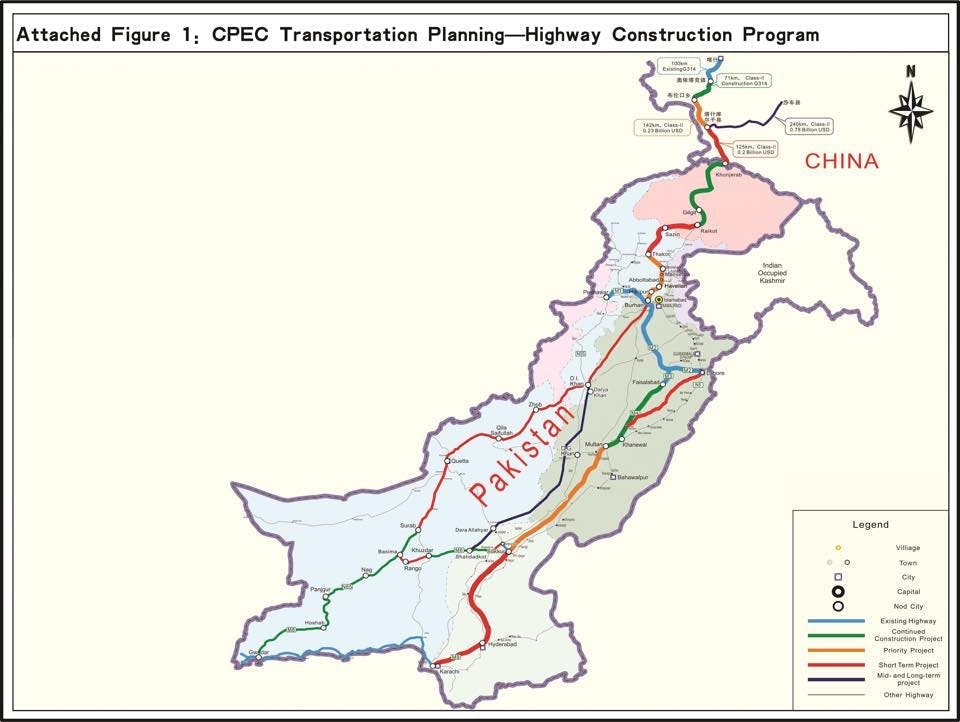
12 Jan: Federal Planning Minister Ahsan Iqbal uploads this official map of CPEC Highway Construction Program as included in Transportation Plan showing western route.
CPEC is one of six planned corridors of China’s world-reshaping $225B Belt and Road Initiative (BRI).
1 Jan: ‘One corridor, multiple passages’ is the consensus, says the Chinese Embassy in Islamabad in a press release.
Major CPEC events in 2015
30 Dec: PM Sharif lays foundation stone of the western route (N-50 and N-70 sections of Zhob-Mughalkot Carriageway) of CPEC in Zhob. He is accompanied by federal ministers Lt-Gen (R) Abdul Qadir Baloch, Jam Kamal and NSA Lt-Gen Nasir Janjua, and political leaders MNA Maulana Fazlur Rehman of JUI-F and MNA Mehmood Khan Achakzai of Pakhtunkhwa Milli Awami Party.
21 Dec: A major installation and upgradation of railway tracks under the CPEC is announced. New railway tracks will be laid from Gwadar to Quetta and Jacobabad via Besima.
Some 560km of railway track will be laid from Bostan to Kotla Jam on Main Line-II via Zhob and Dera Ismail Khan, while 682km of track will be laid from Havelian to Khunjrab.
Upgradation of 1,872km of railway track from Karachi to Peshawar via Kotri, Multan, Lahore and Rawalpindi (including Taxila-Havelian) – along with dualisation of track from Shahdara to Peshawar – will also be carried out.
Some 1,254km of railway track from Kotri to Attock City via Dadu, Larkana, Jacobabad, DG Khan, Bhakkar, Kundian will be upgraded.
The Executive Committee of National Economic Council (Ecnec) approved the CPEC’s 118km Thakot-Havelian and 392km Sukkur-Multan sections of roads.
10 Dec: China Railway Construction Corporation said its unit, China Railway 20th Bureau Group Co, and Zahir Khan and Brothers Engineers and Constructors have secured a $1.46 billion contract to build the 1,152km section of Karachi-Lahore motorway. – The Economic Times
28 Nov: PM Sharif directs the NHA that western route of CPEC to be upgraded from current two-lane highway to a four-lane motorway, with several industrial zones along the route.
Land will be acquired for six lanes so the motorway can be further upgraded to six lanes when future needs demand it. To fund this additional expense, ADB will be approached. In case of a no, PSD funds will be utilised. – Geo
14 Sep: Pakistan signs 43-year lease for Gwadar port with China. Pakistan rents 2,300 acres to China for developing the first special economic zone (SEZ) in the deep sea port of Gwadar.
The SEZ and the port will be part of the CPEC that aims to improve economic cooperation between the two countries. – CCTV
14 Sept: PM Sharif inaugurates Pakistan-China Friendship Tunnels and Atta Abad Bridge. China has constructed the $275-million 24km portion of Karakorum Highway (KKH) on Atta Abad Lake in Gilgit-Baltistan’s Hunza valley, five years after a massive landslide destroyed the road. The project consists of five tunnels with a total length of 7km, two bridges and 78 culverts.
29 July: Effective 18 August, PIA, the official airline, is now introducing third weekly flight from Islamabad to Beijing, in a show of strengthening Pakistan-China friendship and to cater to increased traffic between the two CPEC stakeholders.
27 July: PM Sharif says the Peshawar-Karachi motorway should be completed by 2017, energy projects under CPEC to be fast-tracked and Gwadar International Airport to be completed in the shortest possible time.
25 July: PANJGUR: Army Chief General Raheel Sharif says Gwadar port and CPEC will be completed at all costs. According to ISPR, 502km out of 870km length of roads have already been constructed.
10 July: Pakistan becomes full member of Shanghai Cooperation Organisation (SCO).
28 May: Western alignment of CPEC from Khunjrab to Gwadar to be completed first on priority basis. PM Sharif gains support of all political parties on CPEC. The route is via Hasan Abdal, Mianwali, D.I. Khan and Zhob all the way to Gwadar.
13 May: PM Sharif says CPEC aims at economic progress of the entire region. He was addressing parliamentary leaders gathered at the PM House for the All Parties Conference for a briefing on the CPEC.
11 May: The beginning: A container is loaded to a ship during the inauguration ceremony of container service at a pier of Gwadar Port.
22 April: Chinese President Xi Jinping concludes his Pakistan visit and signs agreements worth an unprecedented US$46 billion with PM Sharif.
Industrial parks and special economic zones (SEZs) are part of the CPEC MoU agreed between the leaders of the two countries. A key prerequisite for establishing SEZs is resolving the energy crisis and building of a competitive infrastructure in Pakistan.
17 April: A Special Security Division (SSD) is being set up for the CPEC, consisting of nine battalions of the army and six battalions of the civilian forces. $250 million has been sanctioned for army force to guard Chinese personnel working on CPEC. The annual budget will be $60 million.
11 March: PM Sharif inaugurates the construction of first phase of the Karachi-Lahore (M-9) Motorway, which will cost Rs 36 billion. M-9 will facilitate people commuting between Karachi and major cities including Sukkur, Badin, Ghotki, Rohri, Dadu, Pannu Aqil, Ubaro, Sadiqabad, Rahim Yar Khan, Zahir Pir, Jalalpur Peerwala, Abdul Hakim, Mamu Kanjan and Nankana Sahib.
9-11 Jan 2014: The first meeting of the JCC working group on transport is held in Pakistan.
5 July 2013: Pakistan and China sign eight MoUs including one on a long-term economic corridor, capping a meeting between Prime Minister Nawaz Sharif and his Chinese counterpart Li Keqiang in the Chinese capital Beijing.
The 2,500km road and rail link connecting the northwestern city of Kashgar to Gwadar port is among eight pacts inked by the two countries. The corridor is expected to cost around $18 billion. Federal Minister for Planning Ahsan Iqbal inks the pact from the Pakistani side while the chairman of the National Development and Reforms Commission signs it from the Chinese side.
An MoU on the Lahore-Karachi Motorway is also signed and PM Sharif asks concerned departments to complete the project in 2.5 years.
The two countries also sign a $44 million agreement on setting a fibre-optic cable from the China-Pakistan border to Rawalpindi. The document is signed by Strategic Communication Organisation of Pakistan and Huawei Technologies Company. – Agencies
CPEC is a 15-year plan and will be completed in four phases:
2018: Early Harvest
2020: Short Term
2025: Medium Term
2030: Long Term
The China-Pakistan Economic Corridor is an infrastructure project of unprecedented scale in Pakistan that is likely to result in rapid industrialisation of this currently underperforming economy.
While it facilities China to transport its goods and oil to Persian Gulf through a land route in less than half the time, CPEC will be a game-changer for ordinary Pakistanis in terms of new economic opportunities to set up businesses and scale them.
CPEC could be our pathway to prosperity, higher living standards and a developed country in a few decades.
In the first phase, CPEC is chiefly energy and infrastructure
The first phase of the CPEC is focused on $46 billion worth of energy and infrastructure projects. China’s state-owned banks will finance Chinese companies to fund, build and operate CPEC projects in Pakistan over the next six years, according to Reuters.
Major Chinese companies investing in Pakistan’s energy sector will include China’s Three Gorges Corp which built the world’s biggest hydro power project, and China Power International Development Ltd.
Under the agreement signed by Chinese and Pakistani leaders at a Beijing summit recently, $15.5 billion worth of coal, wind, solar and hydro energy projects will come online by 2017 and add 10,400MW of energy to the national grid. An additional 6,120MW will be added to the national grid at a cost of $18.2 billion by 2021.
The transport and communication infrastructure – roads, railways, cable and oil and gas pipelines – will stretch 2,400km from Gwadar to Khunjerab Pass at the China-Pakistan border in the Karakorams.
Starting this year, the Chinese companies will invest an average of over $7 billion a year until 2021, a figure exceeding the previous record of $5.5 billion foreign direct investment in 2007 in Pakistan.
Special economic zones (SEZs)
Beyond the initial phase, there are plans to establish special economic zones (SEZs) in the Corridor where Chinese companies will build factories, resulting in developing an industrial base.
Extensive manufacturing collaboration will include a wide range of products from cheap toys and textiles to consumer electronics and supersonic fighter planes.
Similar collaboration has helped countries like Indonesia, Japan, Hong Kong, Malaysia, South Korea, Taiwan, China and Vietnam rise from low-cost manufacturing base to more advanced, high-end exports.
As a country’s labour gets too expensive to be used to produce low-value products, some poorer country takes over and starts the climb to prosperity. This could be true in the current scenario of Chinese labour costs increasing and manufacturing potentially coming to Pakistan.
Once completed, the CPEC with a sound industrial base and competitive infrastructure combined with low labour costs is expected to draw growing FDI from other countries looking for a low-cost location to build products for exports to rich OECD nations.
How the CPEC started
The CPEC is one of the six corridors planned under President Xi Jinping’s BRI Initiative.
On 22-23 May 2013 after the PMLN wins the 11-May general elections and just a few days before Nawaz Sharif takes oath as PM, Chinese PM Li Keqiang visits Pakistan. An MoU for the CPEC is signed during that visit.
The MoU on cooperation for long-term plan on China-Pakistan Economic Corridor is signed by China National Development and Reform Commission’s Chairman Xu Shao Shi and, Advisor to the Prime Minister Shahid Amjad Chaudhry.
President Asif Ali Zardari and the Chinese PM witness the MoU signing.
On 4-5 July 2013, Nawaz Sharif visits China for further deliberation on the CPEC and sign eight MoUs.
Pakistan’s Ministry for Planning and China’s National Development and Reforms Commission (NDRC) are nominated as the focal ministries.
These ministries then nominated members for a Joint Coordination Committee (JCC) to plan, oversee and implement the project.
Key challenges to CPEC
- Political instability and continuity of civilian governments
- Likely fight for control on CPEC resources and projects between key 'stakeholders'
- Drawing CPEC into domestic political fights by 'stakeholders'
- Disinformation about CPEC through social and mass media
Wali Zahid is a Pakistani futurist, speaker, social media strategist and blogger. His blog, walizahid.com, is the most authentic place on everything Pakistan.
Wali was one of the first bloggers to post about CPEC as a game changer and THE first to publish an in-country post on BRI.
Known for his widely-read Pakistan2050 forecast, Wali appears on national TV, occasionally writes for The News and speaks about CPEC and BRI enthusiastically. He was part of the first nationwide brainstorming on Vision 2025 at Planning Commission in 2013.
Wali’s early work life was as a journalist where he worked for Dawn, The Nation and becoming Editor of The News, Lahore in 1991. He later worked briefly at BBC London. Later, he established Institute of Media & Communications (IMC) in Islamabad which offered training courses in print and TV journalism, advertising, cartooning and PR.
Wali has been a China watcher for 30 years and has seen China grow from just another country to become world’s next superpower.
Wali was an early adapter to online media, using email by 1994, first website in 1997, and early user of LinkedIn, Twitter and Facebook.
His Twitter followers include US President Barack Obama, several Pakistani ministers and media people. His FB page has over 150k fans and LinkedIn over 30k followers.
He can be reached on Twitter @walizahid

Wali Zahid
Wali Zahid is a longtime China watcher and a Pakistan futurist. An award-winning journalist, he writes on issues of significance to Pakistan and CPEC & BRI.
Related posts
